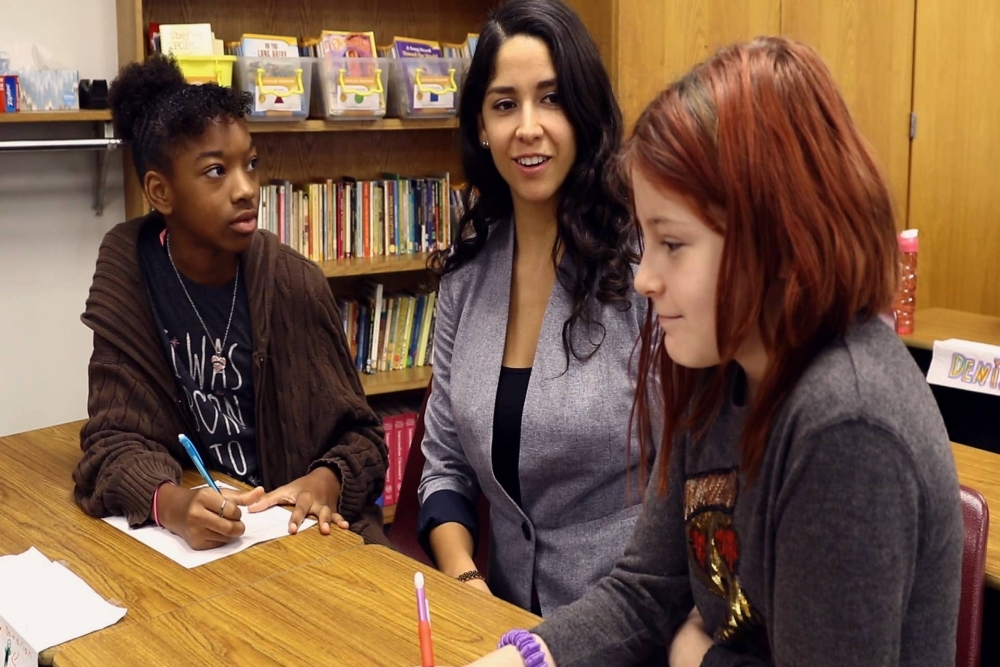Practitioners in the biomedicine industry lament factors that led to (science, technology, engineering, and math), STEM dropouts among minority students. They are looking at conditions that deter minority students from leaving a mark in the technological research field.
Despite constituting a third of the US population, these minorities represent just three to four percent (3-4%) of the scientific teaching staff at the medical colleges in the US.
For all the years and efforts spent on introducing diversity programs that emphasize meeting the technological needs of underrepresented students, STEM education is still considered to be a far-flung reach for underrepresented minorities such as the Latin Americans, natives, or black students.
More unsettling facts emerge as underlying root causes are studied. Besides an increasing number of first-generation dropouts from STEM college courses, it is also observed that female students do not usually perform on par with their male counterparts.
Culture in STEM education hostile towards minority class
Besides the fact that not much is done to accommodate the minorities’ interests, Jana Marcette, assistant professor at the Harris-Stowe State University in St. Louis, argues that they may just not have the required aptitude, which seems to be an outright prejudice or excessive typecasting.
A sample case is Patricia Castruita, who bagged a prestigious research position at one of California’s top-notch research institutions. Her mentor was doubleminded over, giving a recommendation letter for a STEM course only because she hailed from a minority group.
While Castruita decided to voice her opinion at the collaborative pan discussions held by the European Molecular Biology Organization (EMBO) and American Society for Cell Biology (ASCB), there are others who struggle to express their disappointment about the STEM education culture which continues to be more hostile towards the “less-privileged” minority class.
For someone who grew up in a Native American, Ukrainian and a Lebanese family of struggling artists, Ahna Skop, a genetics professor at the University of Wisconsin–Madison, feels that a lot of it has to do with inhospitable environments in the class for these students.
With the help of a typical ice-breaker questionnaire, Skop gauged the hesitation from the insufficiently represented student groups and tried to make them feel welcome. Such activities, according to her, not only alleviate the challenges that come with originating from such backgrounds but also help them find common interests among students from other communities.
Another noteworthy study conducted by psychologists from the Stanford University deduced that reading about the struggles and challenges their peers and seniors faced goes a long way in reinstating confidence.
The online courses designed by them shed light on the achievements by the unsung achievers from the inadequately represented student community, who chose to rise to the occasion rather than getting bogged down by the stereotypes on STEM dropouts.
Solutions to STEM dropouts
Filmon Haile, a fellow participant at the ASCB-EMBO panel discussion and an African-American STEM graduate, feels that a meaningful student-professor relation is alone eloquent of an inclusive culture. It helps the student when the mentor expands the conversation to something more profound than the grade on a paper.
In 2017, an ingenious effort led by the Howard Hughes Medical Institute (HHMI), offered one million dollars ($1 million) as a research incentive to the universities which find ways to implement the “big change.”
An official explained that the participant universities were encouraged to study the social undermining of these students and the barriers that constitute STEM dropouts.
One such successful applicant, Kenyon College of liberal arts in Ohio, decided to revamp its faculty promotion process. The college prioritized the promotions and advancements of those teachers who are able to cultivate inclusiveness, take a holistic approach to teach technical education, and prevent further STEM dropouts.
Gilliam Fellowships, another such initiative taken by the HHMI, aims to include mentoring and guidance as an integral part of providing STEM education. Participants engage in a series of face-to-face and online sessions that emphasize on developing leadership skills among faculty members. In the training, a pragmatic approach towards rating student assignments suggests being careful with words as a certain group of ethnicities reacts harshly to criticism.
Bolster research environments for minorities
One professor, teaching at an institute with a traditionally black student setup, detected a greater need for communication exercises before commencing the teachings. Being the only white in a class of 30 African-American origins, she observed how word meanings could change with a slight variation in tone.
It dawned on her when one of her students was unable to grasp some inextricable concepts of cell division but was able to comprehend it when a fellow student explained. This was when she discerned the need to promote social sciences research for better inclusivity in classes.
She furthered her efforts by organizing iEMBER (Inclusive Environments and Metrics in Biology Education and Research), a network of educators and researchers from disciplines such as biology, sociology, psychology, and chemistry, collaboratively working to support research environments for minorities and give them a feeling of acceptance.
Meanwhile, Massachusetts Tufts University carefully examines the effects of their teaching faculty’s fundamental beliefs and perceptions towards race, creed, and ethnicity on student behaviors and performance to find root causes of STEM dropouts.
In the end, when it comes to judging an academic performance, the STEM teaching professionals must always let the work do the talking. However, in doing so, they must be mindful of the privileges and perks that come with specific classes for teaching while they do not appear in others.
A recent announcement earmarks fifty-six (56) million dollars to support scientific research in higher education institutions as a joint collaboration between Israel and the US. While this is heartening for researchers in both countries, let’s hope that this blatant issue about STEM dropouts is given more importance.







